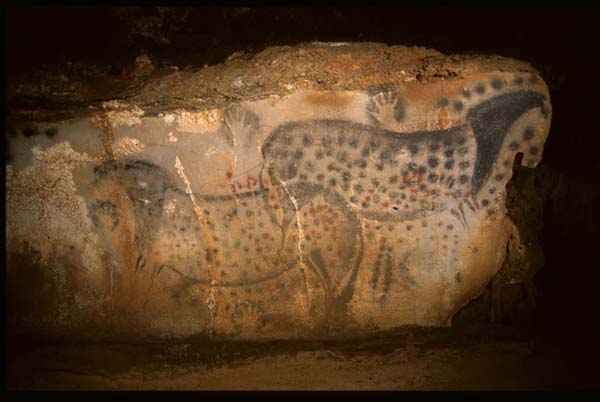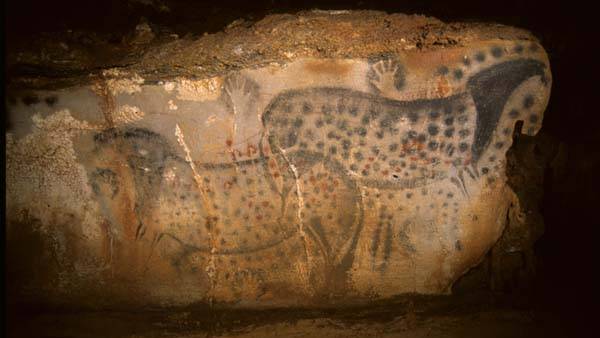Cave painters were realists, DNA study finds
Source: artdaily.org
Cave painters during the Ice Age were more like da Vinci than Dali, sketching realistic depictions of horses they saw rather than dreaming them up, a study of ancient DNA finds.
A cave painting of pair of spotted horses, found in the Pech Merle Cave in Cabrerets, southern France. Scientists estimate the drawing, measuring about 4 meters wide by 1.5 meters high, is about 25,000 years old. An ancient DNA study found that Ice Age artists drew horses based on their observations rather than imagination.
AP Photo/Center for Prehistory of Pech Merle, P. Cabrol.
It’s not just a matter of aesthetics: Paintings based on real life can give first-hand glimpses into the environment of tens of thousands of years ago. But scientists have wondered how much imagination went into animal drawings etched in caves around Europe.
The latest analysis published online Monday in the Proceedings of the National Academy of Sciences focused on horses since they appeared most frequently on rock walls. The famed Lascaux Cave in the Dordogne region of southwest France and the Chauvet Cave in southeast France feature numerous scenes of brown and black horses. Other caves like the Pech Merle in southern France are adorned with paintings of white horses with black spots.
Past studies of ancient DNA have only turned up evidence of brown and black horses during that time. That led scientists to question whether the spotted horses were real or fantasy.
To get at the genetics of equine coat color, an international team led by the Leibniz Institute for Zoo and Wildlife Research in Germany analyzed DNA from fossilized bones and teeth from 31 prehistoric horses. The samples were recovered from more than a dozen archaeological sites in Siberia, Eastern Europe, Western Europe and the Iberian peninsula.
It turned out six of the horses had a genetic mutation that gives rise to a spotted coat, suggesting that ancient artists were drawing what they were seeing. Brown was the most common coat color, found in 18 horses.
Researchers who were not part of the study praised the use of genetics, saying it supports their observations.
[...]
Read the full article at: artdaily.org






















